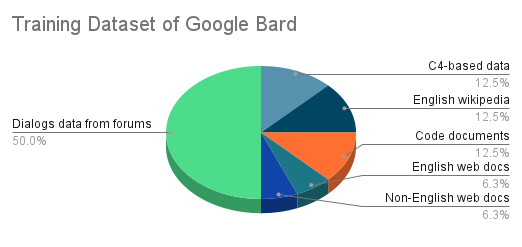
Microsoft Bing integrated the trending ChatGPT in its search engine to deliver better search results. Over 100 million people started using the new Bing Chat feature every day!
Not to risk the market share, Google also launched its AI-powered conversational bot — Google Bard. 😃
Google Bard is a Large Language Model developed by Google to enhance the online search experience.
In this blog post, I will explore some of the most insightful Google Bard statistics to help you better understand its capabilities.
Latest Google Bard Statistics & Facts
Google Bard was officially released on February 8, 2023. The access was opened up on March 21, 2023.
Its name comes from the Bards of Celtic cultures, who were professional storytellers, verse-makers, music composers, oral historians, and genealogists.
Bard is based on Google’s LaMDA (Language Models for Dialog Applications) model.
The LaMDA language model has been fine-tuned using Transformer-based neural language models containing up to 137 billion parameters.
Google has been working on the LaMDA since 2017 with the Google AI team. Therefore, Google Bard is more than 6 years old project!
The language model of Bard has been pre-trained using more than 750 GB of data.
The training data of Google Bard include the web, books, and other sources, as well as user-generated content such as search queries and translations. Google is a bit unclear about the training dataset. Google Bard was trained using 1.56 trillion words from a public dataset.
 The estimated reach of Google Bard is 1 billion users. That means almost 1 out of 8 people worldwide will use Google Bard!
The estimated reach of Google Bard is 1 billion users. That means almost 1 out of 8 people worldwide will use Google Bard!